Hydrangeas are generally easy to care for and are beautiful, colorful landscape additions. However, you find that some pest is eating your hydrangea, and you want to stop them. Well, you have come to the right place. For this post, we gathered up-to-date information to thoroughly answer your question.
Many garden pests feed on hydrangeas. Fortunately, once you identify the pest based on observing the damage they leave and observing the pests themselves, there is a wide range of ways to stop them. Common hydrangea pests include:
- Aphids
- Beetles
- Scale
- Slugs
- Caterpillars
- Spider mites
- Deer and other mammals
Keep reading the rest of this post for details on each of the above-bulleted hydrangea pests. This guide includes how to identify each pest and recommends pest control options for each. In addition to the above list of pests that "eat" hydrangeas, we included a quick primer on bacterial and fungal hydrangea infections. To conclude, we discuss the best way to prevent infestations before they start.
![Gorgeous bright violet colored hydrangeas at full bloom on the garden, What Is Eating My Hydrangea? [And How To Stop Them]](https://gardentabs.com/wp-content/uploads/2021/09/What-Is-Eating-My-Hydrangea-And-How-To-Stop-Them-683x1024.png)
Aphids
Aphids are small (about 2mm) insects that can attack almost any soft plant tissue. They have an oval body and come in a wide variety of colors, including green, brown, and yellow. These insects damage your plant by sucking the juices out of the stems and leaves.
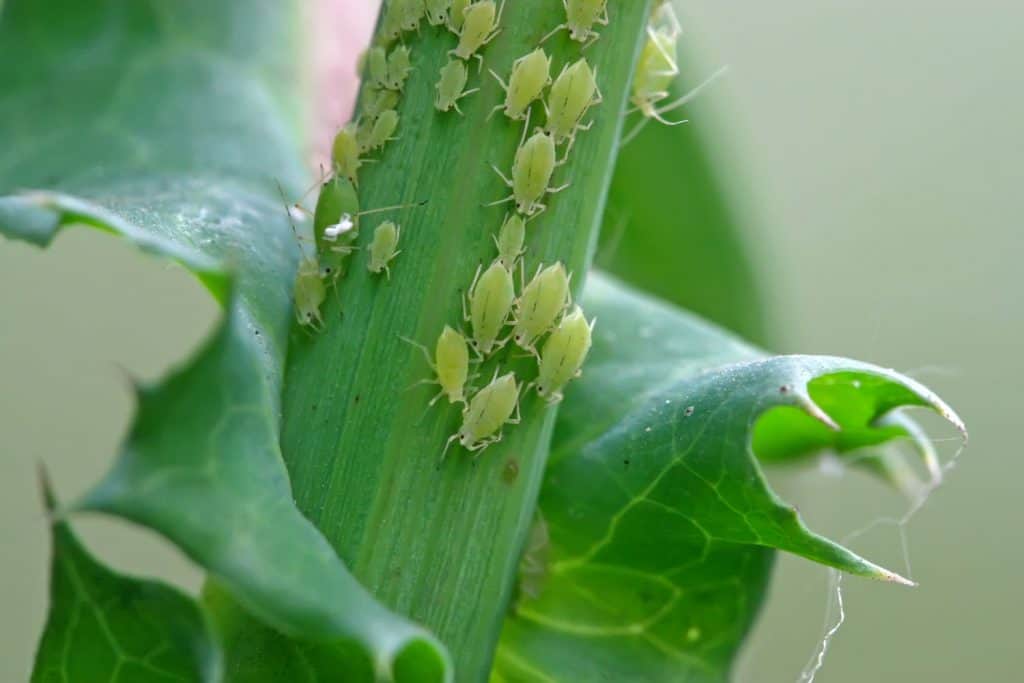
Often, aphids attack in droves and can easily identify either with the naked eye or under a magnifying glass. They cause hydrangea leaves to curl, dry, and yellow. Further, they often leave a coating of sticky substance on the plant they are attacking.
Treating for Aphids
There is a wide range of options for treating aphids include home remedies, organic solutions, and stronger man-made chemicals. All options are listed in this section.
Fortunately, the soft, permeable bodies and weak motor abilities of aphids make them relatively easy to treat with home remedies. In fact, and for minor infestations, simply spraying your plant with cold water will dislodge aphids, a fate they cannot recover from. Further, dusting your plant with flour may also get rid of all of your aphids.
Click here for ready-to-use neem oil from Amazon.
Neem oil, an organic insecticide, is very effective against aphids. Mix to the manufactures recommendation and spray on your hydrangea.
For the worst aphid infestations, you might need to resort to stronger measures. There is a wide range of topical chemical insecticides sold by hardware and gardening stores - all of which should be more than up to your aphid task.
Beetles
There are many potential beetle pests that eat hydrangea. Species include the Japanese beetle and rose chafers. Generally, you can identify beetles easily because of their larger size, bright colors, and hard exteriors.
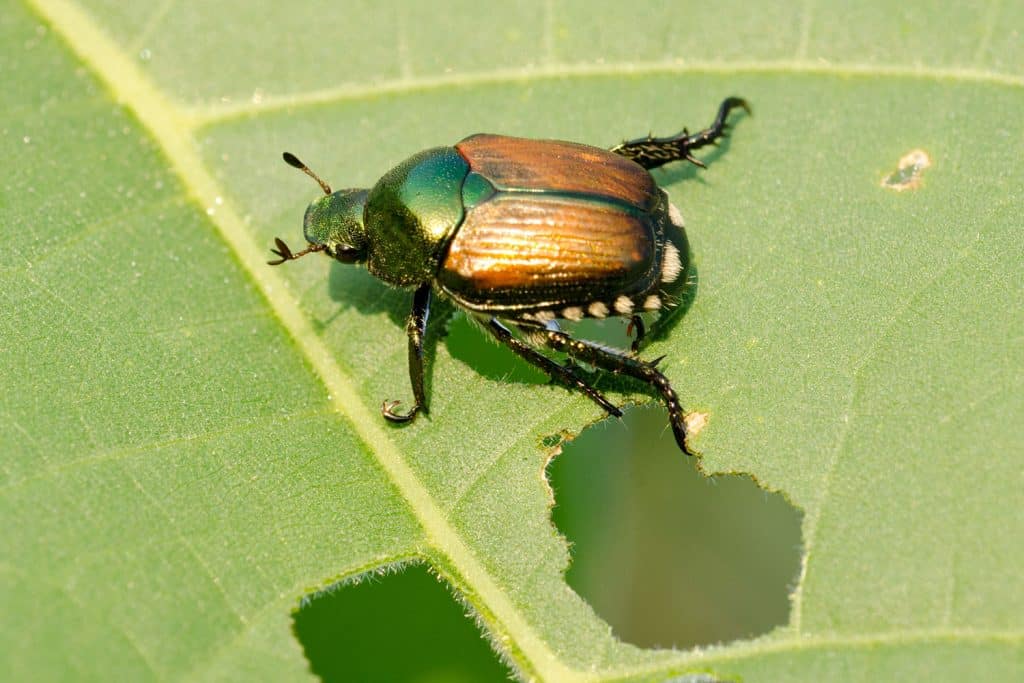
Beetles will leave a series of jagged holes and cuts in the leaves of plants that they attack. Sometimes, the beetles will hide during the day, so the only sign of their presence is the damage they leave.
Treating for Beetles
Beetles are much tougher than their aphid cousins; because of this, you should move directly to stronger control measures. For most beetle problems, repeated application of neem oil or pyrethrin is usually enough to remove these pests from your hydrangeas. For a stronger chemical option, try a spinosad product.
Click here for a beetle spray from Amazon.
On the other hand, there are a few alternative options for beetle control. For instance, you can often handpick beetles off your plants because of their larger size - this only works for more minor infestations or very dedicated gardeners. Beetle traps are also marketed. However, in most cases, these traps will serve to attract local beetles to your area and should not be used.
Scale
A wide variety of scale types and species exist that may attack your hydrangea. These small insects are usually smaller than 1/8th of an inch and have rounded bodies. They are most unique because they permanently attach themselves to a place once they start feeding.
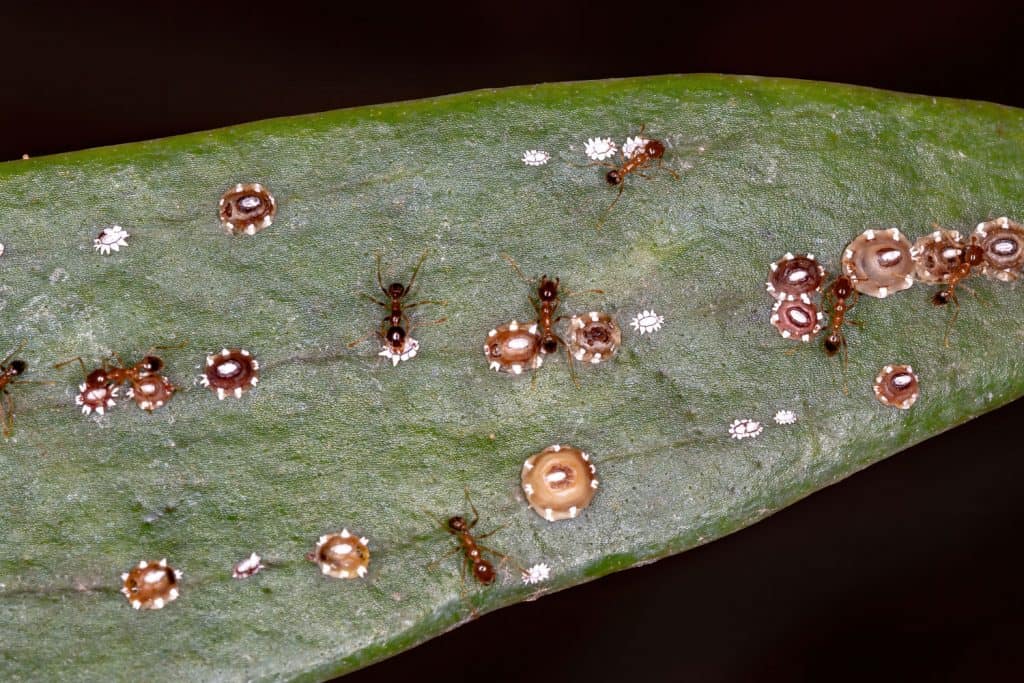
The feeding scale attaches in clusters that make it look like your plant has scales. Look for these on both the hydrangea leaves and stems. Unfortunately, the hard shell that scales use makes them challenging to treat - however it is still possible to get rid of these potentially deadly hydrangea predators.
Treating for Scale
Neem oil and insecticidal soap are both potential scale treatments. However, these chemicals only work on the scale while the pests are in their larval, or mobile, stage. This means you will need to reapply for both of these treatments bi-weekly until you can visually confirm that all the scale is gone.
Click here for insecticidal soap from Amazon.
For very bad scale infestations, you first should cut off and burn or bag heavily infected limbs. This removal of large quantities of scale may save your hydrangea in the long run. Alternatively, you can use systemic insecticides that enter your plant's veins and then the scale as the pest feeds. Systemic insecticides can be quite caustic, so they should be used only as a last resort.
Slugs
These ubiquitous garden pests are widespread in wet and humid areas. Slug damage is particularly prominent on young hydrangea, where slugs can effectively kill the plant by chew the stem off at the ground.
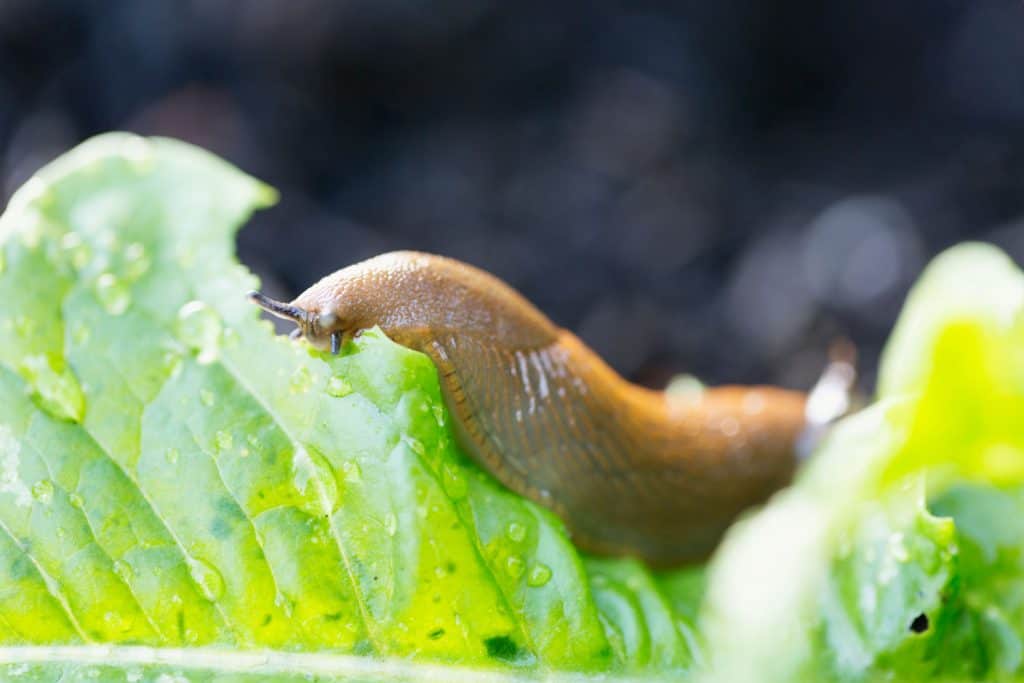
Look for jagged chewed stems and leaves and slug trails if you cannot visually find the culprit. Sometimes, slugs only come out at night, so they are hard to catch in the act.
Treating for Slugs
Many slug remedies exist, including many home remedies like leaving beer or salting the slugs. However, taking the time to pick off and kill slugs by hand is the most effective at-home option (gloves and a killing tool are recommended).
Click here for slug killer from Amazon.
Other slug killers include the brand Sluggo, which is safe for kids and pets. As with most other pesticides, it is essential to reapply slug killers if you notice the infestation reemerging periodically. Further, rain, other precipitation, and heavy watering will wash away the slug poison.
Caterpillars
There is a wide range of caterpillars that will attack hydrangea. The most common of these is the fruit worm. That being said, this type of hydrangea infestation is not overly common. Look for gnaw marks on the leaves and the caterpillars themselves to identify this particular pest.
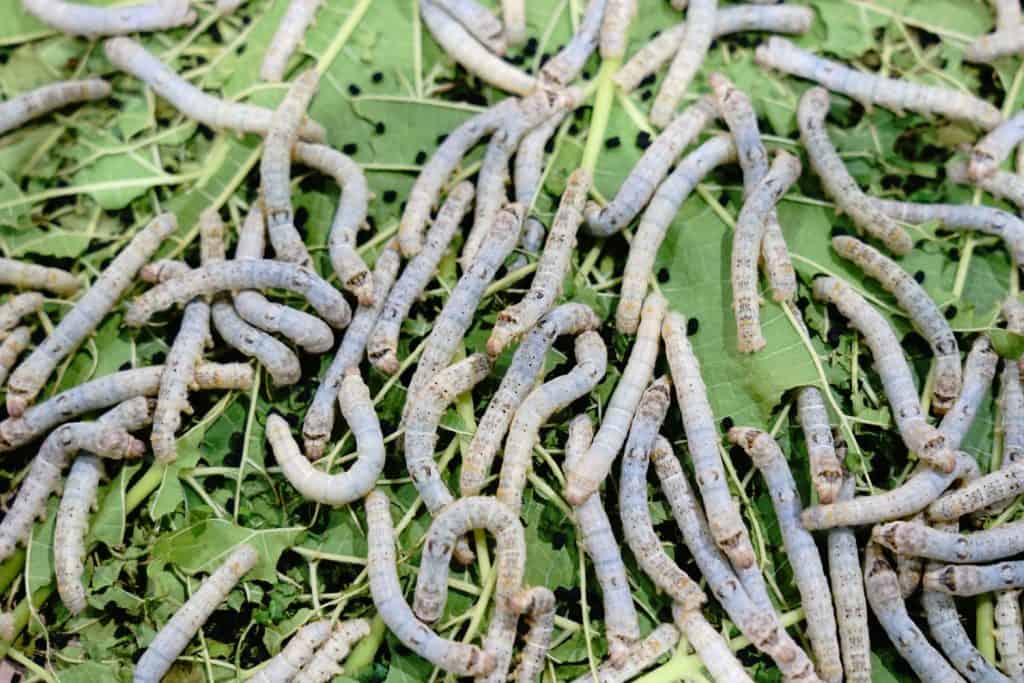
Treating for Caterpillars
Like slugs, caterpillars can be manually picked off and disposed of. However, these time-consuming labor-intensive task is often less than effective. This means that for more severe caterpillar infestations, you will want to use chemical pesticides.
Click here for Bacillus thuringiensis from Amazon.
Once again, neem oil is an effective strategy against caterpillars, but only if the infestation is not too bad. For the worst caterpillar cases, Bacillus thuringiensis is the best option (and it is organic). This bacterium will attack all caterpillars and leave you beneficial garden insects, family, and pets safe and sound. To apply, follow the directions on the container.
Spider Mites
Spider mites are voracious and common. These eight-legged garden pests will attack just about anything, and hydrangeas are no exception. You can read more about spider mites in this article from the University of Minnesota.

Spider mites are similar in size to aphids, but instead of being smooth and translucent, they are hairy and often have two spots on their backs. They cause leaves to curl, yellow, and wilt. Like aphids, they suck the plant juice out of your hydrangeas. Also, look for webs with more severe infestations.
Treating for Spider Mites
Once more, neem oil and insecticidal soaps are the most common choice for treating spider mites. Their permeable bodies make it practical to use these gentler, more organic options. Since spider mites can kill hydrangea, you might want to resort to more long-lasting insecticides like bifenthrin and permethrin for the most serious attacks.
To learn more about general strategies for treating spider mites, read this post: Spider Mites On Majesty Palm - What To Do?
Deer and Other Mammals
In addition to the bugs listed above, deer and other mammals also sometimes eat hydrangea. The damage from these animals is usually clearly chewed branches and leaves and large chunks of missing plants. You can also watch for the animals themselves and inspect the ground for tracks.
Treating for Mammals
Click here for herbivorous mammal repellant from Amazon.
Predator urine and fences are both common ways to treat deer and other mammal infestations. Another option is getting a guard dog who will sometimes chase away unwanted yard visitors. Read this article to learn more about scaring away deer: How To Stop Deer From Eating My Flowers? [5 Proven Tactics]
Bacterial and Fungal Hydrangea Infestations
If you see spots on the leaves of your hydrangea or the plant are otherwise getting sick, but there are no signs of physical pests, you likely have a bacterial or fungal infection. Take the time to research the specifics of your issue and treat it accordingly. Take a sample into a local nursery (safely inside a bag) to get expert local advice.
How do I keep bugs from eating my hydrangeas?
The best way to keep bugs away from your hydrangeas is to make sure these plants are healthy. Plant them in organic-rich, well-drained soil and ensure that they have the proper water and nutrients. By doing this, you help the plant's natural immune system fight off any potential bugs or pests that might try to eat your gorgeous flowers.
In Closing
In this post, we answered what is eating your hydrangeas and how to get rid of the most common types of pests. We also touched on bacterial and fungal infections and the best way to keep your plants infestation free. Best of luck ridding your hydrangeas of pests!






